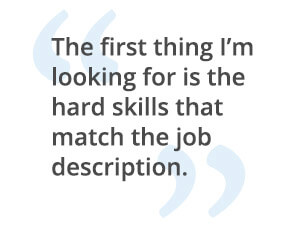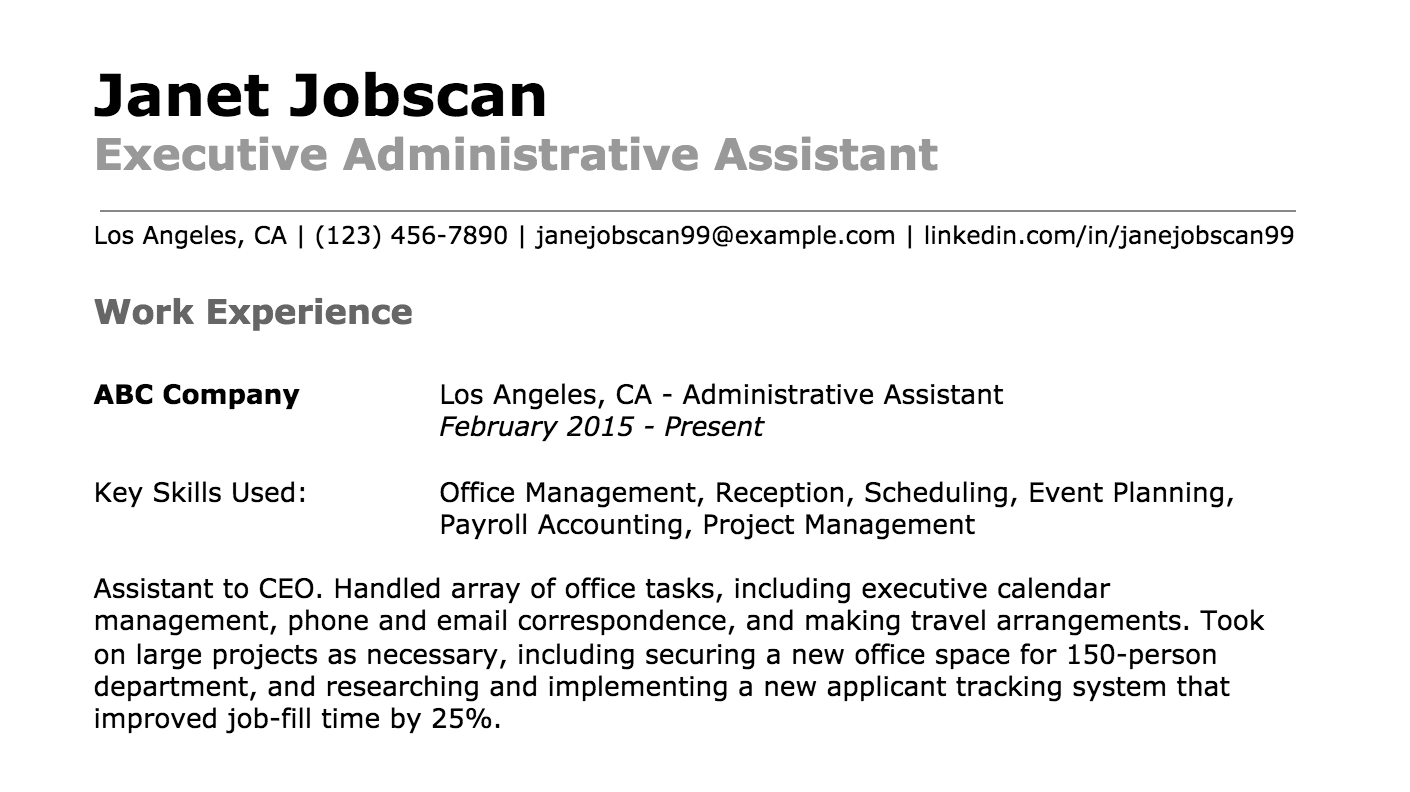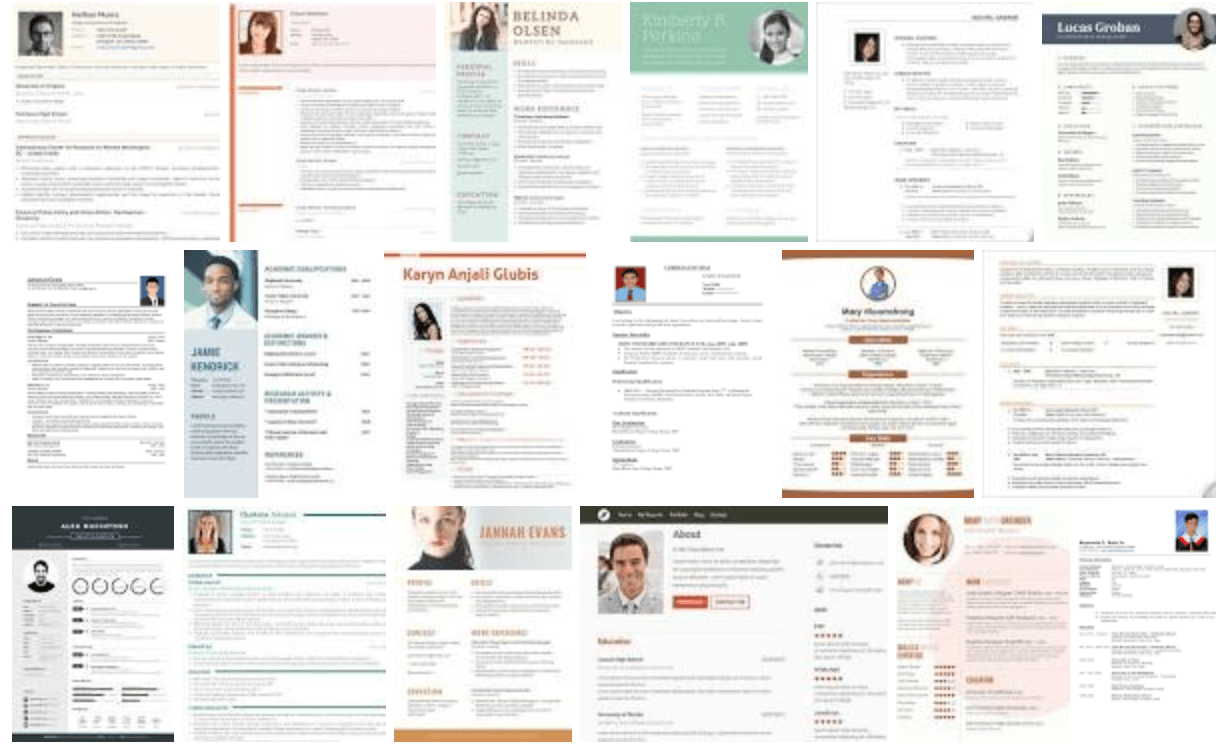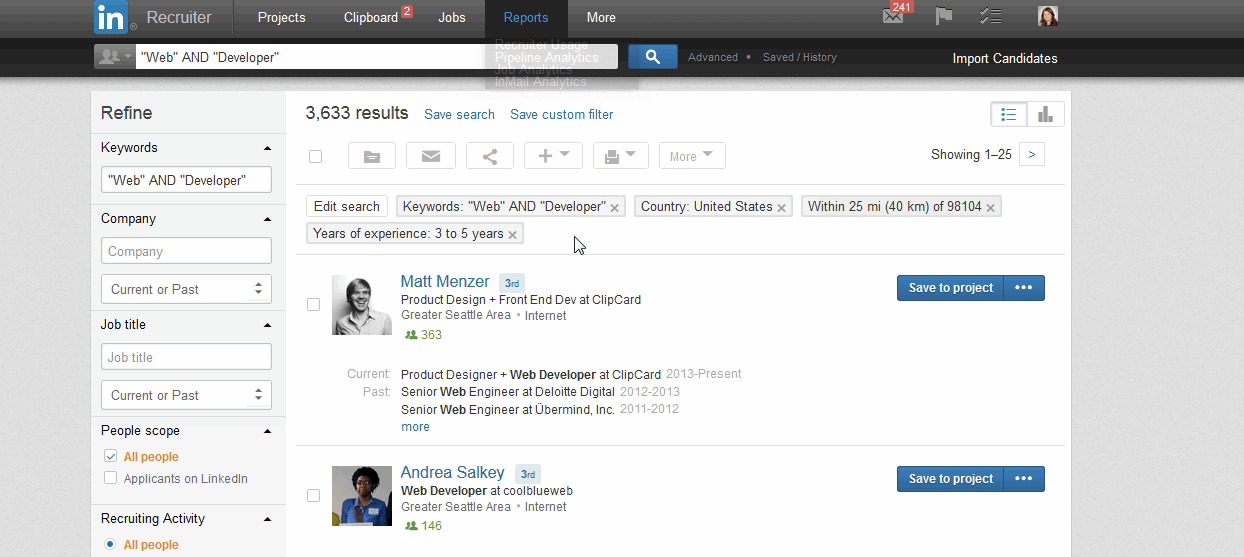Job seekers face a buzzsaw of obstacles, locked doors, and unpleasant experiences in pursuit of a job offer. The first tests are typically issued by a corporate recruiter who serves as the gatekeeper between the job seeker and the hiring manager.
To learn more about what job seekers are up against, we spoke with four corporate recruiters:
- Andrew, a recruiter for a wide range of positions in the non-profit industry
- James, a healthcare recruiter with over a decade of experience
- Jonathan, a technical recruiter for a Fortune 25 company
- Kevin, a technical recruiter for an international consulting firm
What does a corporate recruiter do?
“A lot of what we do is eliminating the busy work for the hiring manager,” said Andrew. “They want to see three-to-four candidates that match at least 75% of what they’re looking for, then they make the decision.”
A corporate recruiter, also known as an in-house or internal recruiter, is the point person for a company’s job opening. They are tasked with distributing the job posting, intaking applications and resumes, sourcing candidates, and narrowing the applicant pool. Corporate recruiters do not make the final hiring decision, but are tasked with delivering a handful of the most qualified candidates to the hiring manager.
Corporate recruiters shouldn’t be confused with agency recruiters or headhunters, who are only paid if the company hires their candidate. Corporate recruiters are on the same team as the hiring managers. As a result, they are less focused on their placement rate and more concerned with long-term fit and retention.
“It’s a totally different mentality,” James told us. “I’ve been working at this job for 10 years. I’ve known these managers for years. I’m looking for our long-term benefit.”
How corporate recruiters find candidates
“When the hiring manager decides they need somebody, they open a requisition,” said James. “That goes through an approval process with management and signing off on all the budget stuff. Once all that’s done it shifts to me.”
Developing the job description
Corporate recruiters don’t typically write job descriptions but are often involved in the process. “I help with job descriptions sometimes,” said Jonathan. “Depending on the hiring manager, they might want to write their own job description.”
Whether it’s to modify the job description or simply make sure everyone’s expectations are in sync, the recruiter starts off by talking everything over with the hiring manager.
“I’m the guy that takes our generic job description and asks the manager, ‘Does this adequately address what you want?’” James told us. “I coordinate with the manager to ask, ‘Are there specific details that we need to put here, specific skills or education to customize this for your specific need?’”
Sometimes it’s the recruiter’s job to make sure the hiring manager isn’t asking for too much.
“With hiring managers, they want to throw pretty much everything onto the ‘need to have’ side of things,” said Andrew. “Our job as recruiters is to help them take a step back and differentiate between the ‘need to have’ experience and the ‘nice to have’ experience. Because if you have a long list of “need to have” experience, it’s going to really complicate the recruiting process.”
Once the job description is finalized, the recruiter is responsible for distributing the job posting to their job boards of choice — Indeed, LinkedIn, Craigslist et al.
How corporate recruiters review a resume
Once the job description is finalized and posted, corporate recruiters field the incoming job applications and resumes. The response depends on the type of position, but some recruiters intake overwhelming numbers. “Some of our positions tend to have upwards of 200 applicants,” Andrew told us.
How do corporate recruiters sift through to find the best candidates?
Applicant Tracking System searches and filters
Most large companies, including 99% of Fortune 500 companies, utilize an applicant tracking system, or ATS. This software has a variety of features that helps recruiters and human resources reps throughout the entire hiring process. The features most interesting to job seekers are the ones that allow applicants to be filtered, searched, and ranked.

If an applicant submits their resume or job application through an online form, they’re interacting with an ATS. One of the ways corporate recruiters narrow down their applicant pool is by asking knockout questions on the online application.
“We set up our [ATS] with pre-screener questions,” said James. “When someone is applying on the website, those questions are screening for minimum qualifications for that job code. For example, if the minimum qualifications include a Bachelor’s Degree and 5 years of experience in this particular realm, there will be questions that speak to that to try and screen out people who don’t meet those requirements.”
Some ATS can also parse an applicant’s resume and make the text searchable for the recruiter. To filter down a high volume of applicants, the recruiter can simply search for keywords on the resume, such as hard skills or job titles. The best way to determine what a recruiter might search for is by analyzing the job description.
“The first thing I’m looking for is the hard skills that match the job description,” Kevin told us.
“Customizing your resume for applicant tracking systems and the software that’s doing keyword searches, that’s absolutely true in my industry, in any industry in general,” said James. “That’s very much how employers tend to do that.”
What corporate recruiters want to see on a resume
Some studies suggest that recruiters only spend an average of 6 seconds skimming a resume and determining a fit. Whether or not it’s that extreme, recruiters aren’t studying every resume top to bottom. “Initial assessment, maybe 15-25 seconds per resume,” said Andrew.
“A lot of people don’t know how to write resumes to articulate what they actually do,” said Jonathan. So what do corporate recruiters want job seekers to do on their resumes?
Include a hard skills section
“I would suggest people having a hard skills section,” advised Kevin. “When we reformat our internal resumes, skills and competencies are always at the top, right underneath the name, before you get into work experience.”
It’s become increasingly popular to list skills near the top of the resume. The functional and hybrid resume formats are designed specifically for this purpose.
Use accomplishments to demonstrate skills
Job seekers can’t rely on a skills list alone. Those skills lose their meaning when they’re not backed up by context and accomplishments.
“If I’m looking at a resume, the ideal person for me, they’re gonna have, ‘Here’s the hard skills that I have,’” described Jonathan. “Then from there, ‘Here’s my current job. Here’s a project I worked on and what that accomplished. Here’s the problem and here’s how I solved it.’”
He continued: “Breaking it down to, ‘Here’s my contribution to this company, what I did.’ That is the best kind of resume to me because it gives me a really quick, ‘OK, here’s how you used [a skill]. This is what you accomplished.’”
If an important skill is listed, it should be made abundantly clear how and where that skill was utilized and developed. Evidence is required.

This applies to both hard and soft skills. “I’m not too turned on by candidates who put things like ‘hard working,’ ‘dedicated,’ things like that [on their resume],” said Andrew. “There are so many things that you can say about yourself, but how is that demonstrated? If you put down something like, ‘Haven’t missed more than three days in a year,’ that’s solid numbers, something that’s more tangible.”
Prove that your experience meets requirements
Experience level is among the minimum qualifications in most job listings. Job seekers that clearly demonstrate that they have enough quality experience will stand out among applicants. “I’d say 80% of the people aren’t what we’re looking for,” said Jonathan. “They’re just applying online.”
He continued: “The first thing that I look at is how long have they been doing what they’ve been doing.”
“I want to see the progression of not only what job title and what company you were working for, but also a snapshot of the progression of your career,” said James.
“I also look at the types of companies they worked with,” said Jonathan. “Is it a small two-man shop? For us they’ll work for a large enterprise applications, so do they have that kind of experience, [working] on a large team of 10, 20, 30, 40 people?”
Resume formatting matters
It’s not just about key skills and impressive experience. Not only can formatting cause problems in an ATS, recruiters draw conclusions from the way your resume is laid out.

“I’m not just looking for the content of it, I’m looking for how you format the information,” said James. “I’m looking at the logical flow of it, how you categorize the information, how does it read. The quality of presentation tells me something about you.”
He concluded: “If you did a sloppy resume, you’re losing points already before I’ve even called you. If I even call.”
It’s not just the design. Consistent formatting can make the difference.
“Say their last position they were there from ‘10/12/2010 until 11/1/2017’ but in the previous company the person said from ‘November 2, 2008 until January 3, 2009,’” described Andrew. “That’s misformatted in the way the dates are conveyed. I know that’s a very nitpicky thing, but I’ve had candidates not move forward in the process because of something like that.”
By doing something as simple as using the job listing title on your resume, your interview chances go up by 3.5 times.
Don’t use a resume template with a photo
Job seekers should also be wary of resume formats that include their headshot. “I’m not the biggest fan of pictures on resumes,” said Kevin. “That kind of drives me nuts and immediately opens the door to recruiter discrimination, which is obviously something everyone is trying to avoid.”
To keep themselves above claims of discrimination, some recruiters automatically reject any resume that includes the applicant’s photograph.

How Corporate Recruiters Source Passive Candidates
Corporate recruiters also look beyond their incoming job applications to fill roles. Reaching out to candidates that aren’t directly applying is known as sourcing. Job seekers can improve their chances by supporting these efforts.
Put your resume on career sites
Sourcing often starts with browsing resumes posted by job seekers to a variety of job boards. This includes the big name career sites such as Indeed, Monster, Glassdoor, CareerBuilder and others. There are also niche sites that cater to specific industries. For example, in healthcare, James checks out NatureJobs. In tech, Jonathan and Kevin browse sites like Dice, GitHub, and Stack Overflow.
“Stack Overflow works really great because you can see their skills, you can see questions that they’ve asked [to the Stack Overflow community], how active they are, if they’re an active or passive candidate, things like that,” said Jonathan. “It’s a great tool.”
Optimize for LinkedIn recruitment
87% of recruiters use LinkedIn to source or vet job candidates.
“We use a lot of LinkedIn Recruiter,” said Kevin. “That’s probably the main tool I use.”
Recruiters use LinkedIn Search to find candidates that have the right job title or hard skills for the open position. They can return a combination of skills and titles in one search by crafting a complex Boolean string. A Boolean search contains “and,” “or,” and “not” operators and other modifiers that help return very specific results.
For example, a very simple Boolean search would be “Web AND Developer.” This search only returns LinkedIn profiles that have both of those terms.
“I’m taking the hard skills that are listed in the job description and doing some sort of Boolean search with them [on LinkedIn],” said Kevin.

The searches can become very complex. “I had a coworker who would send me these 20- or 30-line-long Boolean searches,” said Kevin. Here’s an example of a long and complicated Boolean search string for a User Interface Designer position:
(“UI Design” OR “UI Designer” OR “User Interface Design” OR “User Interface Designer” OR “user interaction design” OR “user interaction designer” OR “human computer interaction” OR “HCI” OR “UI/UX Design” OR “UI/UX Designer” OR “UX Designer” OR “UX Designer” OR “user experience design” OR “user experience designer” OR “interaction design” OR “interface design” OR “interaction strategy”) AND mobile AND (“consumer facing” OR “consumer-facing”) AND NOT director AND NOT manager
Adding keywords from actual job descriptions to their LinkedIn profiles helps job seekers appear in more recruiter search results.
Interviewing with a recruiter
Once a corporate recruiter has identified candidates they’d like to learn more about, the next step is to schedule a quick phone call known as a phone screen.
Be engaging in the phone screening
“That’s going to be a phone interview, maybe take about 20-30 minutes at the most,” said James.
“If I come across an individual whose resume is a very strong match, my first thing is to call that individual so that we can have a 20-30 minute conversation where he can take me through the resume,” Andrew told us.
The phone screen serves a few purposes. To start, it gives the recruiter their first good opportunity to gauge the candidate’s verbal communication.
“You want to know how good they are conveying their past experience to someone that they’ve never met,” continued Andrew. “So in that initial conversation, I’m gauging what their communication skills are like.”
“If someone can’t really hold a conversation on the phone they’re probably not going to move forward in the interview process,” said Kevin.
“If you get someone on the phone and they’re super monotone and they don’t have a lot of enthusiasm, you’re just like, ‘This is a high energy place. If you’re not at least able to be excited about what I’m telling you, it’s not gonna work out,’” said Jonathan.

Make sure your resume adds up
The second thing recruiters are doing during the phone screen is vetting the resume.
“As I’m having this conversation I’m looking for discrepancies, because people are oftentimes not real honest in job interviews because they’re trying to sell themselves,” said James. “I’m looking for your story to make sense.”
“A lot of individuals don’t like making their resume longer than 2 pages,” said Andrew. “I always recommend trying to squeeze it into one. But when you have that limited amount of real estate, there are going to be some things that you have to leave out. … [In a phone screen] you’re trying to really mine out each position individually so you’re able to answer any sort of question that a hiring manager may have about that individual.”
Get excited about the company
Aside from logistics and other specifics that need to be addressed, the third goal of the phone screen is to sell the candidate on the company and get an idea of culture fit.
“I tell them about our company, tell them about what we do, why it’s a great place to work,” said Jonathan. “Kind of be that sales guy to get them excited about the position.”
“One of the questions that I do try to ask everyone is what the culture at their old jobs were and what they liked and didn’t like and compare it to what ours is,” said Kevin.
Depending on the company and position, a corporate recruiter might opt to bring in a candidate for an in-person interview. That said, the phone screen is typically the only interview the recruiter will conduct with a candidate. After a successful phone screen, the recruiter will assemble a report featuring their notes and the candidate’s resume and send it to the hiring manager for review. An in-person interview will typically be with the hiring manager.
In some organizations, the corporate recruiter may come back around after a successful in-person interview to present the offer, negotiate salary, and tackle other logistics.
How to impress a corporate recruiter
Job seekers focus a lot of attention on the hiring managers. They tailor their resume to the hiring manager’s job description. They personalize their cover letter for the hiring manager. They prep for common in-person interview questions. But impressing the corporate recruiter is the first step. Without an OK from the recruiter, the hiring manager is completely unaware of most applicants.
To recap, in order to make a good impression with a corporate recruiter, job seekers should do the following:
- Meet the minimum qualifications
- Validate listed skills with examples and accomplishments
- Exhibit an attention to detail on the resume– Presentation matters
- Include optimized keywords on their resume and LinkedIn profile
- Be prepared to talk about themselves on the phone (enthusiastically!)
We also analyzed data of almost a million job searches, finding proven methods from real job seekers that get you through that door and sitting in an interview.















